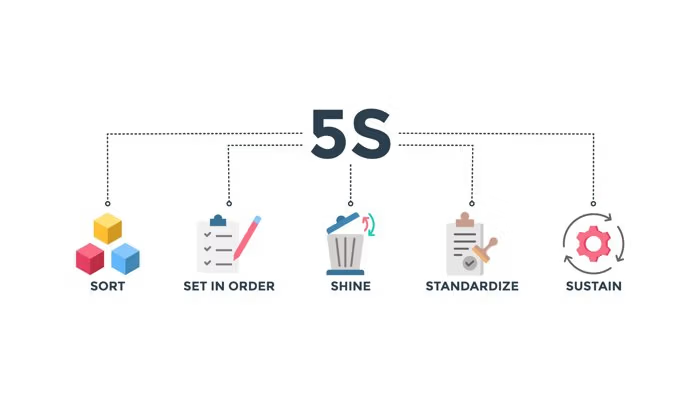Summary: Centerlining, a method that has been used in the manufacturing industry since the 1990s, has established itself as an indispensable strategy for process optimization and quality assurance. Today, over 75% of global companies in industries such as automotive, food processing, and chemicals utilize centerlining to monitor and adjust critical production parameters. Unlike previous approaches, which required manual adjustments, this method enables a significant reduction in deviations through precise settings, leading to more stable and efficient processes.
What is Centerlining?
Centerlining is a methodology used in manufacturing that focuses on optimizing the performance of production processes. It involves defining a centerline for a process, which serves as the baseline for operational efficiency. By establishing process settings to ensure consistency, manufacturers can achieve better control over production variables. This is particularly important when utilizing sightline systems that help visualize upper and lower limits for critical parameters. To improve centerlining, it’s essential to know which process variables are most impactful on overall performance. Utilizing real-time data allows for timely adjustments and the ability to take centerlining to the next level. Implementing statistical process control charts and control charts can help monitor variations and maintain product quality. Ultimately, the strategy can help enhance overall equipment effectiveness, ensuring that processes run smoothly and efficiently.
The Importance of Centerlining
The strategy plays a pivotal role in sustaining efficient production processes and achieving consistently high-quality outcomes. By implementing centerlining, machines are initialized with precisely tuned settings, allowing operators to commence production seamlessly, reducing errors and minimizing downtime. This method is particularly advantageous during changeovers, as predefined centerlines significantly speed up the process. Additionally, adhering to centerlining protocols is vital for preventing machine malfunctions and minimizing the risk of producing nonconforming products. In manufacturing, even the smallest deviations can drastically affect product quality, making the strategy an essential practice for avoiding costly errors.
How do you maintain efficiency while reducing process variability?
Manufacturing Plant Maintenance Software provides insights to enhance operational stability.
The Centerlining Process
The process, which begins with identifying key parameters like temperature, pressure, speed, humidity, and mixing ratios that directly impact the quality and performance of the production line, can be broken down into four essential steps:
1. Determine Key Process Variables
Start by determining the crucial factors that influence the process. These are the variables that have the most significant impact on the outcome, and their precise identification is vital for effective centerlining.
2. Identify Machine Settings for each variable
Once the critical variables are identified, the next step is to define their ideal settings and acceptable ranges. These settings should be tailored for different grades or products if multiple products are being produced, ensuring that each maintains high quality.
3. Analyze Variable Impact on production
It’s essential to understand how each identified variable affects both the process and the final product. This analysis helps in fine-tuning the settings to achieve the best possible performance, quality, and consistency.
4. Maintain Consistent Application
Finally, ensure that the optimized centerline settings are consistently applied during every production cycle. Continuous monitoring and documentation of any deviations are crucial, allowing for timely adjustments and maintaining the stability and efficiency of the manufacturing process.
By following these steps, companies can ensure a stable, efficient, and high-quality production process, minimizing variability and enhancing overall productivity.
Integrating Statistical Process Control
Through data analytics and analytics tools, organizations can leverage statistical process control to assess process capability and identify the root cause of any breakdown. Centerlining improves efficiency in manufacturing by enabling continuous improvement efforts and fostering a culture of the connected worker. By implementing centerlining procedures, manufacturers can effectively manage product and process variability, ultimately enhancing productivity and quality.
Benefits of Centerlining
Implementing the strategy offers numerous benefits for companies:
1. Reduction of Variability
By setting and monitoring critical process parameters at optimal values, variability in the production process can be significantly reduced. This leads to consistently high product quality.
2. Increased Efficiency
Minimizing deviations and optimizing process parameters can make production more efficient. This reduces downtime, material waste, and the need for rework.
3. Improved Error Detection
Deviations from the centerline act as an early warning system. They indicate that a problem is occurring in the process before it leads to major quality defects. This enables proactive problem-solving.
Standardization of Processes
The strategy facilitates the standardization of production processes, which is particularly beneficial for large companies with multiple production sites. In addition to ensuring consistent quality across different locations, it simplifies training procedures for new employees and enhances the ease of implementing best practices company-wide. Moreover, it fosters greater operational alignment and collaboration across the organization.
Challenges of Implementation
While centerlining offers many advantages, there are also challenges in its implementation. One of the biggest hurdles is correctly identifying the critical parameters and determining the optimal centerline. This requires thorough data analysis and a deep understanding of the process. Additionally, monitoring and maintaining the centerline can be difficult in dynamic production environments, especially when external factors or changes in raw materials influence the process. In such cases, companies must be flexible and adjust the centerline as needed.
FAQ | Centerlining
What is centerlining in manufacturing?
Centerlining in manufacturing is the systematic process of setting optimal parameters to ensure consistent product quality and minimize variability. The goal is to maintain stable operations that consistently produce high-quality products within defined limits.
What are the key components of the centerlining process?
The key components of the centerline process include defining process variables, setting control limits, implementing monitoring systems, and utilizing data analytics to assess performance and make adjustments.
How does centerlining impact production scalability?
The strategy ensures production processes are consistent and repeatable, which is essential for scaling operations. By maintaining a stable baseline, manufacturers can increase production volumes while preserving quality and efficiency.
Can centerlining be integrated with Six Sigma initiatives?
Yes, it supports Six Sigma by reducing variation and keeping processes within limits, providing a foundation for DMAIC (Define, Measure, Analyze, Improve, Control) to enhance performance and reduce defects.
How can centerlining be adapted for variable processes?
For variable processes, centerlining can be adapted by setting multiple centerlines for different conditions, allowing flexibility while maintaining control.
What are long-term benefits of a strong centerlining strategy?
Long-term benefits include sustained product quality, reduced waste, and lower operational costs. By continuously refining and adhering to centerline practices, manufacturers can achieve greater process control, leading to improved overall efficiency and competitiveness in the market.
How does centerlining contribute to predictive maintenance?
It stabilizes process parameters, making deviations more detectable. When these deviations are consistently monitored, they can serve as early indicators of equipment wear or failure, allowing for predictive maintenance before issues escalate.
What additional measures contribute to optimizing production processes?
In addition to continuous monitoring and adjusting process parameters, line balancing is essential. By evenly distributing workloads across workstations, it helps eliminate bottlenecks and delays. This ensures a smooth workflow, maintaining consistent product quality and keeping processes within defined, stable parameters
What are common pitfalls when implementing centerlining in manufacturing processes?
- Data inconsistency: Poor data collection leads to inaccurate analysis.
- Lack of training: Untrained operators deviate from the standard.
- Weak monitoring: Undetected shifts compromise process stability.
How do digital tools support centerlining efforts?
Digital tools provide real-time data analysis, enabling operators to detect and correct deviations early. By visualizing performance metrics and process capabilities, these tools help decision-makers maintain optimal production conditions. Integrating manufacturing plant maintenance software further ensures equipment reliability, reducing downtime and supporting overall process stability.
Image: Adobe Stock – Copyright: © Mikhail– stock.adobe.com





